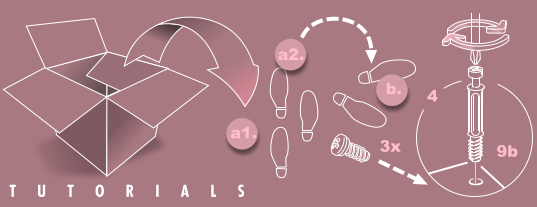
Now comes the fun part. The part where you get to hone your vector tracing skills. We will now trace all of the organic shapes.
I like to trace with the Shape Tool (F4) formerly known as the Shape Editor Tool and changed for reasons unknown. And I prefer to draw with straight line segments. The green outline shown above is my preliminary drawing in which my control points are placed at the key places where the curves start and end (the red outline is the edited outline). Then using the former Shape Editor Tool, I drag the straight lines into graceful curves. To fine tune a curve, click on a control point and adjust the Bezier control handles.

Tracing continues with Shape Editor (F4). I selected a green color for tracing the organic parts… After saving my changes, it gives me a Christmas feeling.
At this point, you should have a complete tracing of the portion of the design that is inside of the cyan triangle as shown above.

TIP: To achieve a smooth curve, select the control point where two curves come together and press the S key on your keyboard to change the default Cusp Join to a Smooth Join. This flattens out the two Bezier control handles into a straight line and forces the two control handles to operate in symmetry. You may need to reconfigure the curve but it will be perfectly smooth.

You can delete the bitmap. (If you locked it, unlock it first).
Select all of the organic leaf shapes and Add Shapes (Ctrl 1) to make them into one object. Select the border objects and Add Shapes to make them one object (or Arrange > Combines Shapes > Add Shapes).
Using the Fill Tool (g), apply Circular fills to each centering the fill over the purple circles and extending in each case to the farthest end of the object. I used a pale green to deep green fill for the leaf shapes and a light orange to deep orange for the border shapes. Apply a solid purple fill to the center circles and a purple and pale purple Circular fill to the circle in the upper right.

Select the cyan triangle and send it to the back. Select all of the elements and Arrange > Apply Clip View.
You should still be in the Edit Inside window.
Select the triangle, turn off Lock Aspect Ratio (the padlock icon on the Infobar, and make sure the width and height are exactly the same value by checking the W and H settings on the Infobar.

This next step is what I call the “Flip-Flop-Fly” and it goes like this.
Select the ClipView triangle and clone it (Ctrl k). Clone creates a duplicate copy in exactly the same position. With the clone selected, press the Flip Vertically icon on the Infobar.
Enter 90 in the Angle of Selection text entry box and press Enter.
Align the flopped rotated clone under the original. Select both versions and set the outline to none.
Press the Save icon to close the Edit Inside window.

Here is the final decorative border. Duplicate the two top designs and flip them vertically if you have not already done this.
The process can be a bit tedious so be happy you only need to trace 1/8th of the frame. Think of it as a Zen Meditation Exercise. :-)
TIP: Look for objects you can duplicate instead of tracing again. Many of the leaves can be copied and reused with small tweaks.
When you have placed all parts into a complete frame it easier to see if there is need for corrections. Simply double-click on any corner to tweak your design.

Here’s the Outlines view.









